Looking to uncover a different side of Vietnam? With magnificent nature, rich culture, and a distinct color of life, Ha Giang is the perfect spot for your next journey.
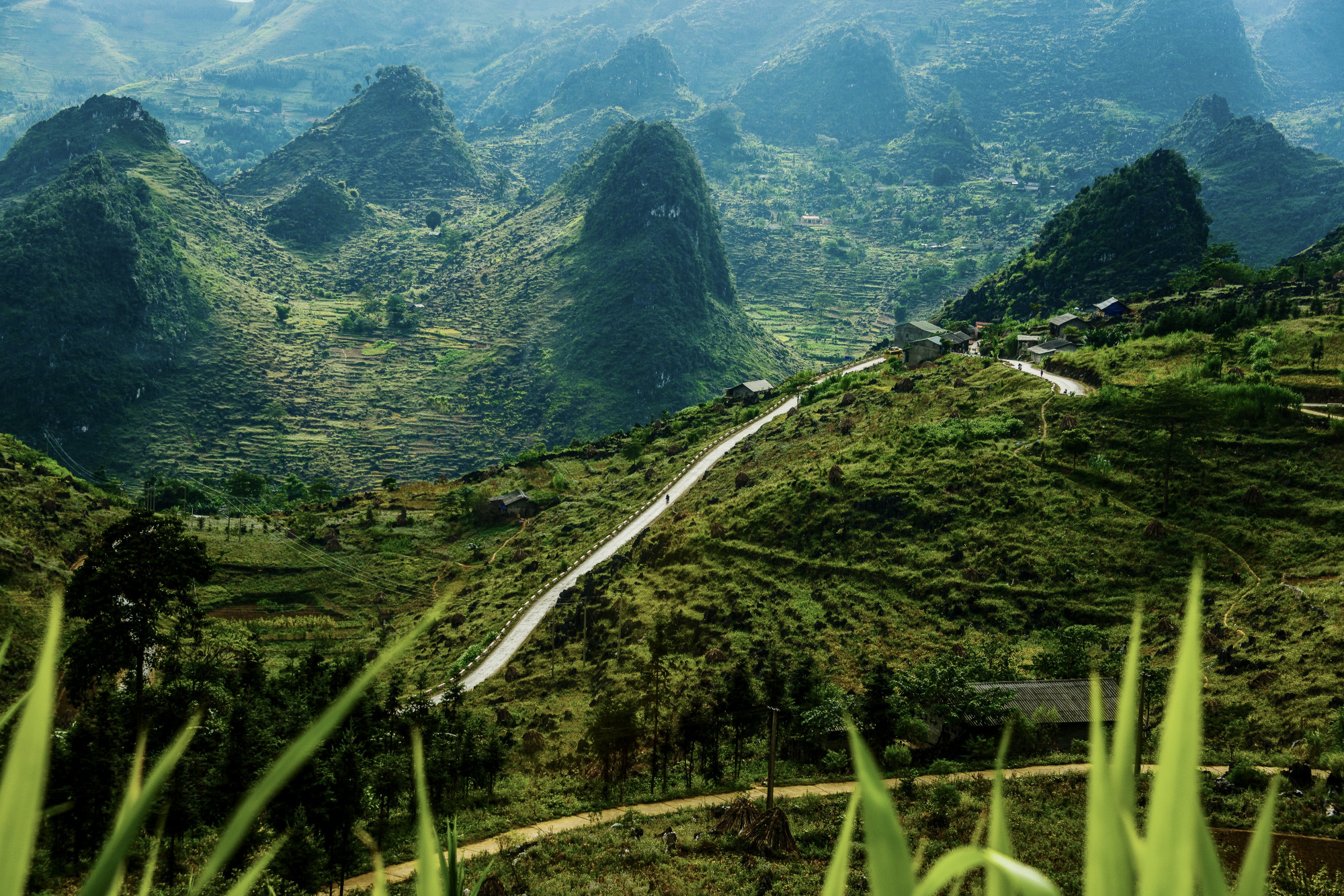
Ha Giang at a Glance
Ha Giang, nestled in the northernmost reaches of Vietnam, is a mesmerizing destination that captivates visitors with its raw, untouched beauty. This remote province is renowned for its breathtaking landscapes, including majestic limestone peaks, winding mountain passes, and lush terraced rice fields that cascade down the hillsides. But Ha Giang’s allure goes beyond its natural splendor; it’s a melting pot of ethnic diversity, home to over 20 different minority groups, each with their own unique customs, languages, traditional attire, and way of life.
Why should Ha Giang be on every traveler’s bucket list?
For adventure seekers and nature enthusiasts who wish to experience an authentic journey off the tourist trail, Ha Giang offers a rare glimpse into a world untouched by mass tourism. Here, you can:
- Witness some of Vietnam’s most spectacular natural landscapes
- Immerse yourself in the vibrant cultures of ethnic minorities
- Embark on thrilling adventures through rugged terrain
- Experience the warm hospitality of local communities
- Capture worthy photos at every turn
Ha Giang is not just a destination; it’s an adventure that will leave you with memories to last a lifetime.
Top Attractions in Ha Giang
Dong Van Karst Plateau Geopark
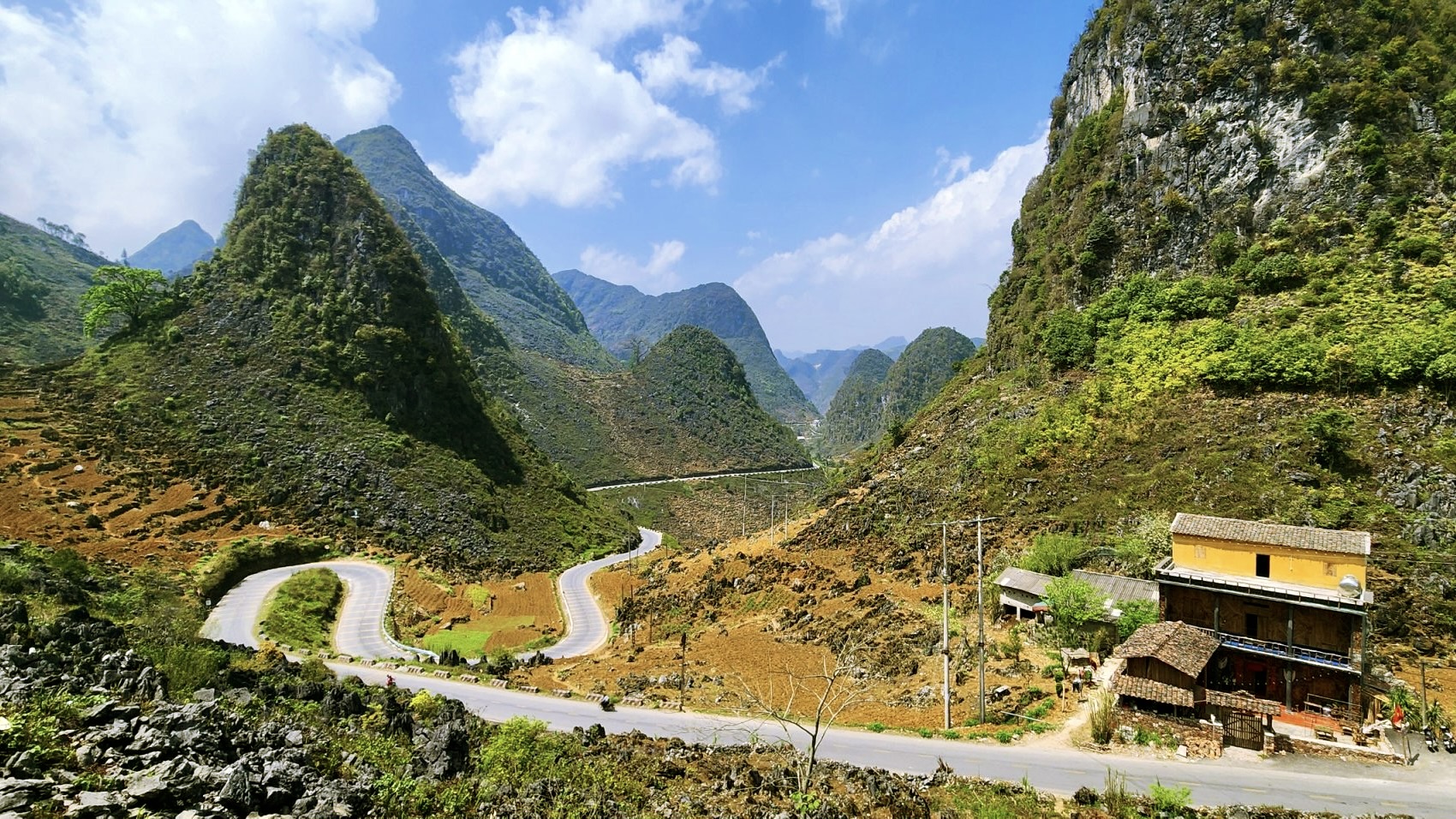
The Dong Van Karst Plateau Geopark is a geological wonder that earned UNESCO Global Geopark status in 2010. This vast expanse of limestone formations covers over 2,350 square kilometers, creating a surreal and sublime landscape. It is not only a natural marvel but also a cultural treasure, home to over 17 ethnic minority groups who have preserved their traditional ways of life amidst the rugged terrain. The geopark’s jagged peaks, deep valleys, hidden caves, and stunning rock formations attract geologists, photographers, and nature enthusiasts from around the world. Visitors can explore its diverse ecosystems, visit ancient fossil sites, and immerse themselves in the rich cultural heritage of the local communities.
Key highlights:
- Lung Cu Flag Tower: Standing proudly at Vietnam’s northernmost point, the Lung Cu Flag Tower offers impressive views of the surrounding mountains and valleys.
- Ma Pi Leng Pass: Known as one of the most heart-stopping mountain passes in Vietnam, Ma Pi Leng is a highlight of any visit to the Dong Van Karst Plateau. The pass offers enchanting panoramic views of the Nho Que River winding through the lush green mountains below.
- Ethnic Minority Villages: Scattered throughout the plateau are traditional villages of ethnic groups like the Hmong, Tay, and Dao. You can visit these villages to experience local customs, traditional crafts, and vibrant markets.
Ma Pi Leng Pass
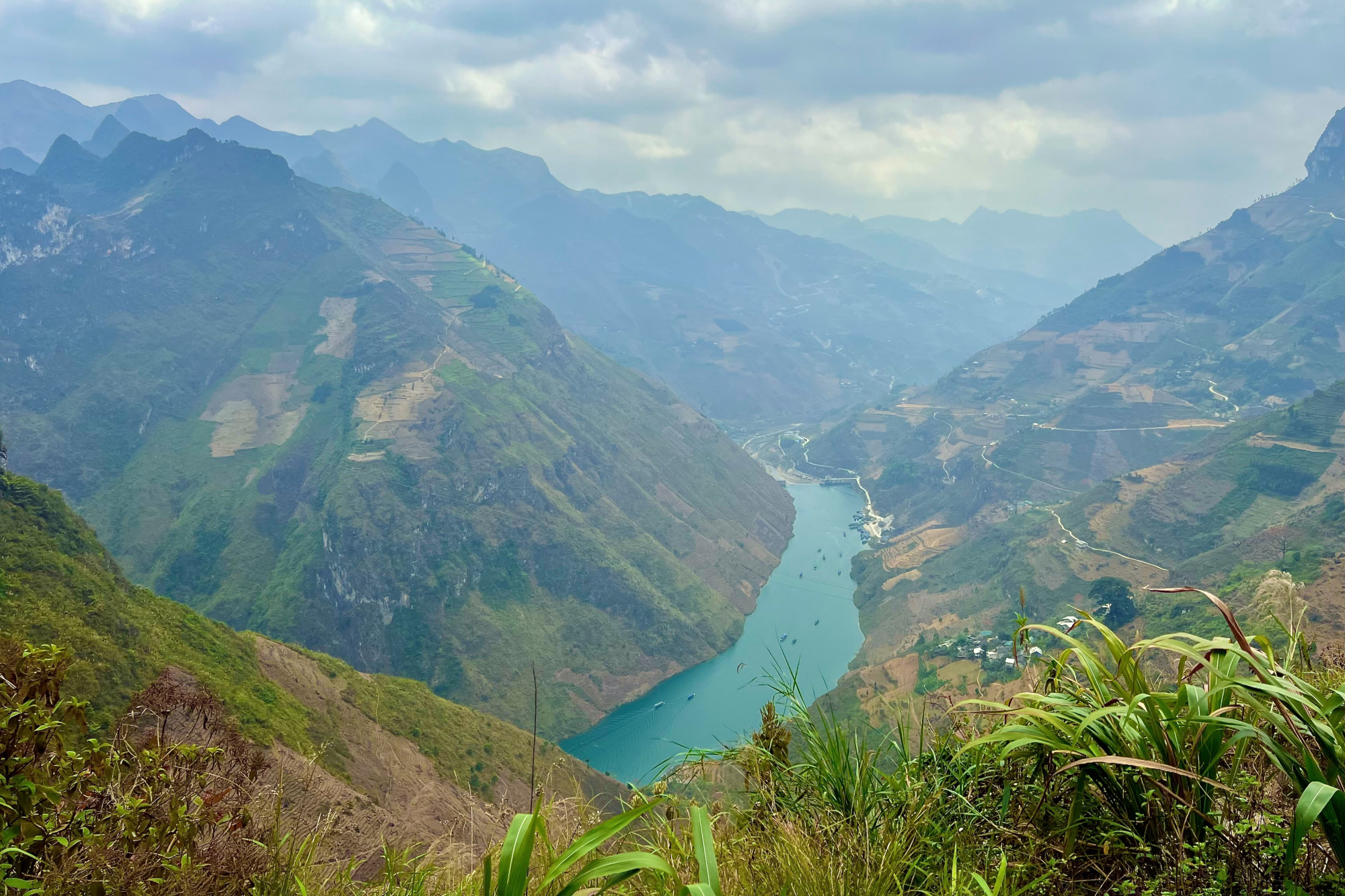
Ma Pi Leng Pass, often hailed as the “King of Passes” in Vietnam, is a spectacular mountain road that winds through the rugged terrain of Ha Giang. Stretching 20 kilometers between Dong Van and Meo Vac, this pass offers some of the most appealing scenery in the country. The road hugs the side of steep limestone cliffs, offering jaw-dropping views of the deep gorge and the turquoise waters of the Nho Que River below. Riding or driving along Ma Pi Leng Pass is definitely a thrilling experience, with every twist and turn revealing new vistas of jagged peaks, lush valleys, and distant villages perched on the hillsides. This pass is a favorite and must-go destination for all motorbike and bicycle enthusiasts.
Key highlights:
- Panoramic Views: The views from Ma Pi Leng are simply magnificent. Stop at the various viewpoints along the road to capture the towering cliffs and deep ravines.
- Nho Que River: The emerald-green Nho Que River winds through the valley below Ma Pi Leng Pass, offering opportunities for kayaking or simply enjoying the serene beauty of the river from above.
- Scenic Riding Routes: Ma Pi Leng Pass is part of the famous Ha Giang Loop, a popular motorbike and cycling route that takes riders through some of Vietnam’s most beautiful and remote landscapes.
Lung Cu Flag Tower
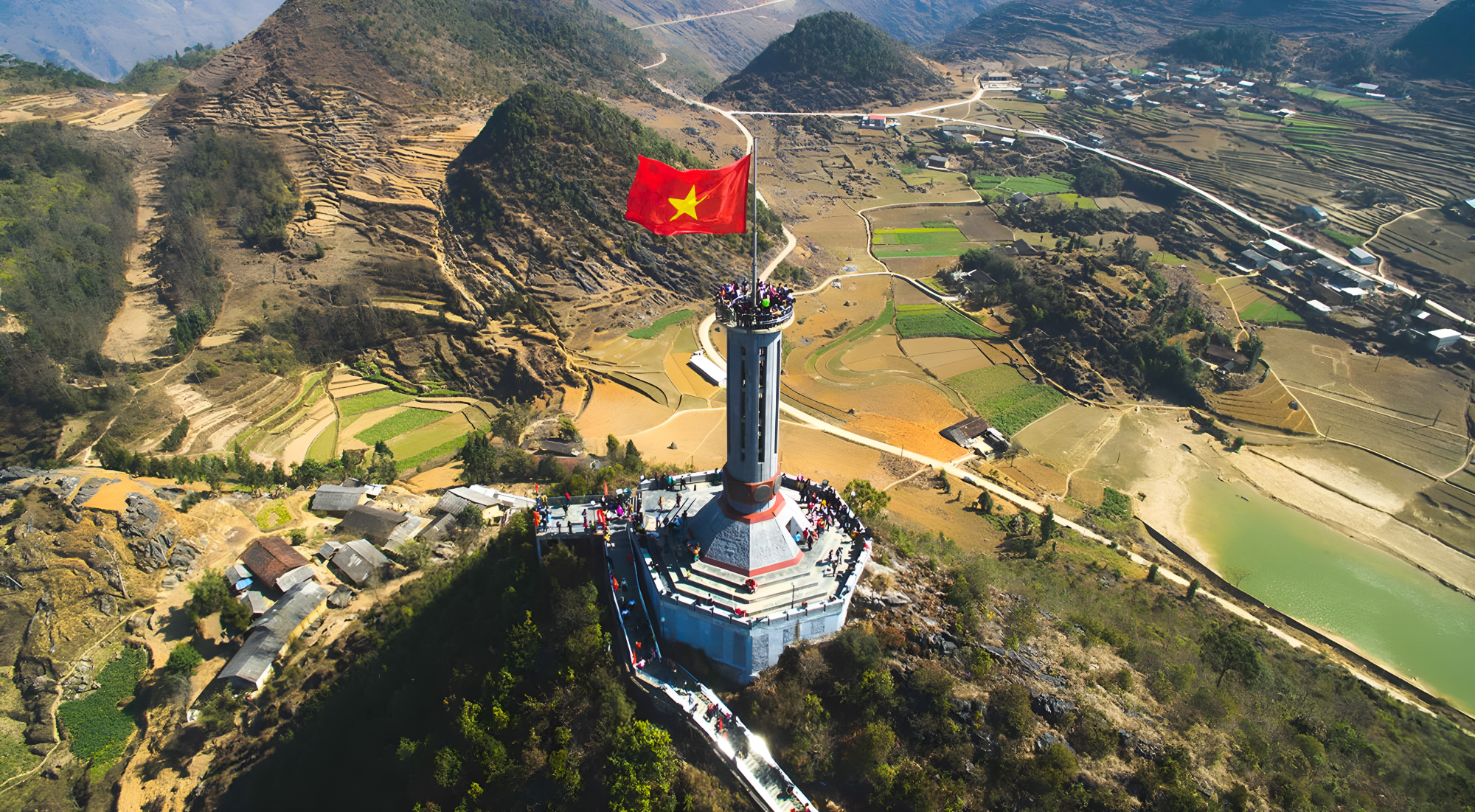
Standing tall atop Dragon Mountain at Vietnam’s northernmost point, the Lung Cu Flag Tower is a symbol of national pride and sovereignty. This 30-meter tower, adorned with a massive Vietnamese flag fluttering in the wind, offers sweeping views of the surroundings, including terraced fields, villages, and the distant Chinese border.
Key Highlights:
- Historical Significance: The Lung Cu Flag Tower represents the resilience and pride of the Vietnamese people. The flag is a powerful symbol of unity and patriotism, making it a meaningful site for both locals and visitors. As you stand atop Lung Cu, you’ll feel a connection to Vietnam’s rich history and its enduring spirit.
- Breathtaking Views: From the top of the tower, you can see the vast, picturesque landscape of Ha Giang, dotted with traditional villages and terraced fields.
- Nearby Ethnic Villages: Explore the nearby villages of the Lo Lo and Hmong ethnic groups, where you can learn about their traditional crafts, visit local homes, and experience their way of life.
Dong Van Old Quarter
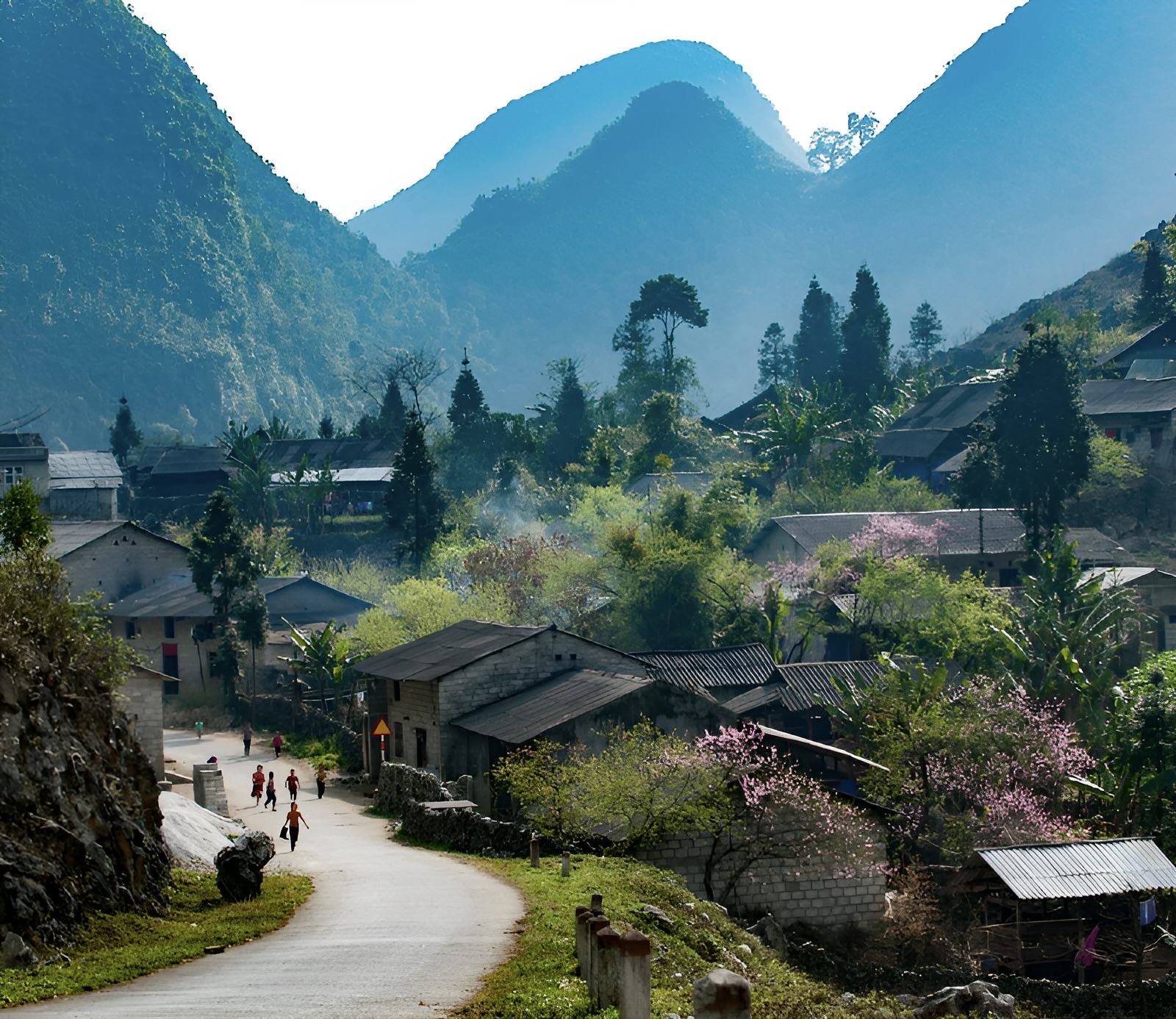
Dong Van Old Quarter is a charming area that reflects the rich cultural heritage of Ha Giang. With its ancient stone houses, narrow alleyways, and a backdrop of dramatic mountain scenery, the Old Quarter feels like a step back in time. Established over a century ago, this small yet picturesque area is home to many traditional Hmong and Tay families. Strolling through the Old Quarter, visitors can admire the one-of-a-kind architecture influenced by both Vietnamese and Chinese styles. The area comes alive on weekends, especially during the Dong Van Market, where local people gather to trade goods, share stories, and enjoy traditional performances.
Key Highlights:
- Ancient Architecture: The stone houses in Dong Van Old Quarter have stood for over a hundred years, showcasing traditional construction techniques and the cultural heritage of the region.
- Local Cuisine: The Old Quarter is a great place to try local dishes, such as Thang Co (a traditional Hmong stew) and Au Tau porridge, a specialty of the region.
- Weekend Markets: The lively weekend market is a bustling gathering of ethnic groups, offering a special opportunity to experience local culture, buy handmade crafts, and sample delicious food.
Hoang Su Phi Terraced Fields
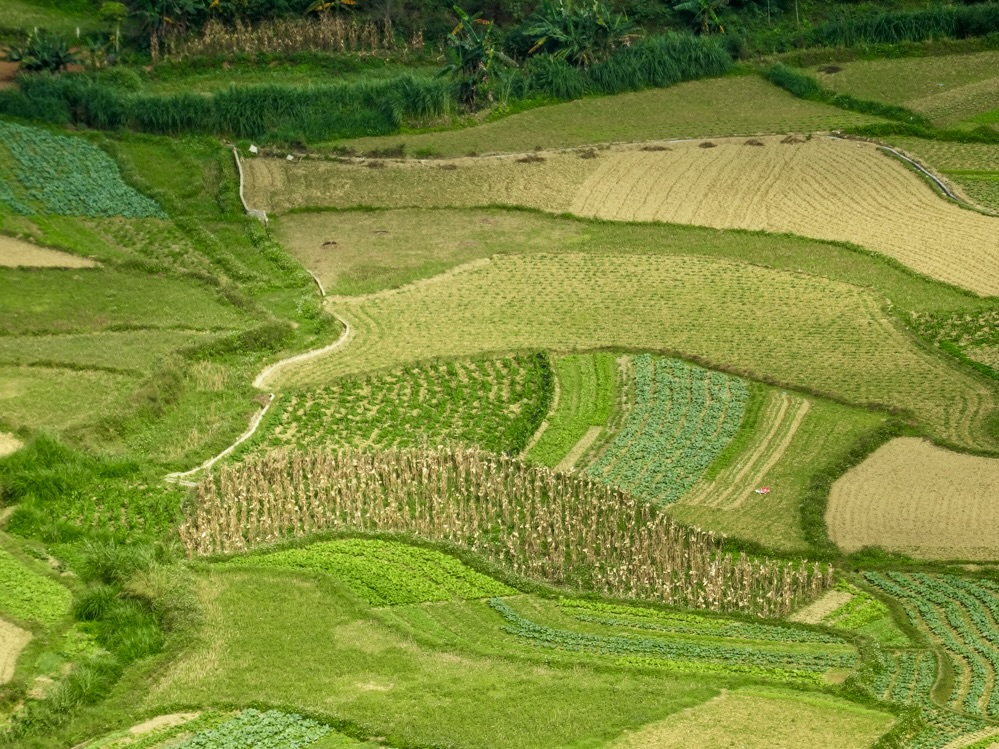
The terraced fields of Hoang Su Phi are a captivating example of traditional agricultural practices in Ha Giang. Carved into the steep mountainsides, these terraces create an exhilarating mosaic of vibrant greens and golden hues, depending on the season. Recognized as a national heritage site, the terraces are particularly marvelous during the rice planting and harvest seasons. Hoang Su Phi is also home to several ethnic minority groups, including the Dao, Nung, and Hmong, who have cultivated these fields for centuries. Visitors can trek through the terraces, visit local villages, and experience the unique cultural traditions of the region.
Key Highlights:
- Best Time to Visit: The best time to see the Hoang Su Phi terraced fields is from September to October, during the harvest season when the fields turn a brilliant golden color.
- Photography Spots: The terraced fields offer endless opportunities for photography, with scenic sunrise and sunset views over the rolling hills.
- Trekking Routes: There are numerous trekking routes through the terraced fields and surrounding villages, offering a chance to explore the landscape up close and interact with the local communities.
How to Fully Immerse Yourself in Ha Giang
The Best Time to Visit
The best time to visit Ha Giang is during the dry season, from September to April, when the weather is cool and ideal for outdoor activities like trekking and cycling. September and October are particularly stunning, as the terraced rice fields turn a vibrant golden hue during the harvest season. Spring, from February to April, is another beautiful time to visit, with moderate temperatures and flowers blooming in a myriad of colors.
Stay in Ethnic Villages and Homestays
It’s a must to go beyond the typical tourist spots and engage with the local way of life to truly connect with this place. And one of the best ways is by staying in ethnic villages and opting for homestays with a local family instead of hotels. Some popular ethnic villages for homestays include the Hmong village of Dong Van, the Tay village of Thon Tha, and the Dao village of Nam Dam. Each offers their own distinct charm and traditions, providing a window into the diverse cultural tapestry of Ha Giang. Staying in a homestay allows you to live like a local, enjoying home-cooked meals, participating in daily activities such as attending local ceremonies, or simply sharing stories around a fire, and learning about traditional crafts such as weaving and embroidery. This not only supports the local communities but also provides a deeper connection to the region and its people, far beyond what a conventional hotel stay can offer.
Hop on Your Bike
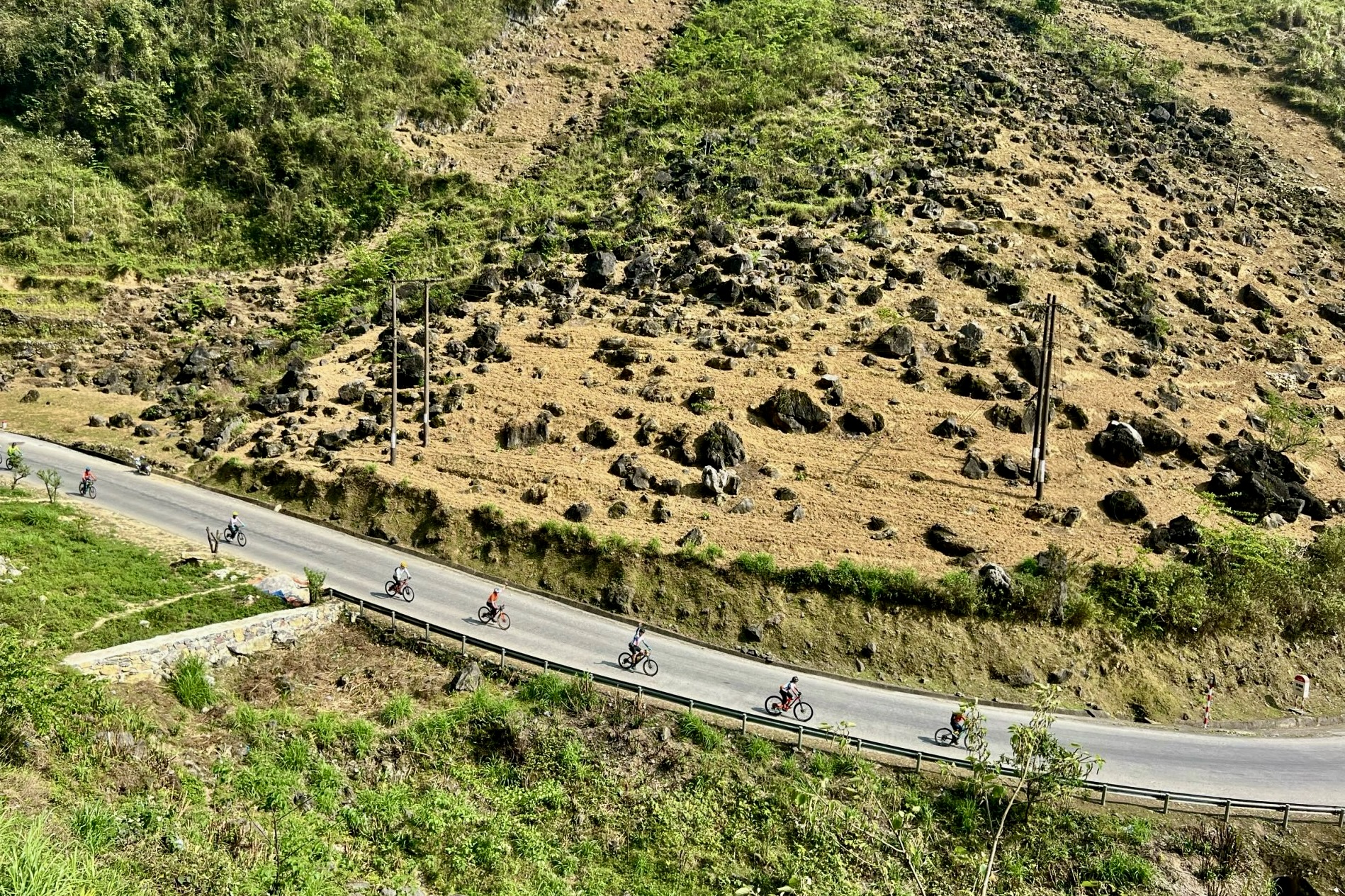
To truly experience the majesty of Ha Giang, let nature’s breath guide you, immerse yourself in the local rhythms, and leave behind the noise of engines. Challenge yourself to cycling through the captivating natural wonders of Ha Giang. There’s a unique satisfaction that comes from pushing your limits to conquer steep hills and discovering off-the-beaten-path spots. Trust me, as a fellow cyclist, moments like these have fueled my passion and happiness for years. The Ha Giang Loop is the perfect cycling route, with its smooth, paved roads winding through the heart of this breathtaking region, connecting you to the incredible places I’ve mentioned. If you’re curious to embark on this new form of exploration but aren’t sure where to start, or if you’re looking for companions to share the ride, try out Cào Cào Adventures’ Ha Giang Loop tour. We’re ready to share stories, create smiles, and craft an unforgettable journey.
